Top speed 333 km/h Length 20 m Unit cost 17,000,000–17,000,000 USD | Range 1,300 km Wingspan 16 m | |
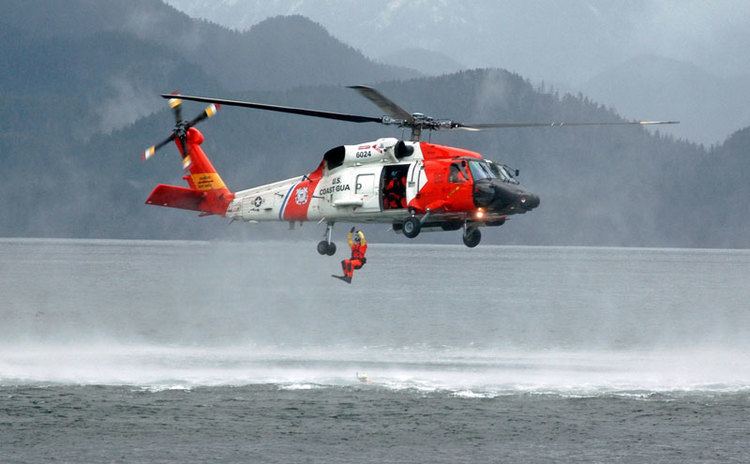 | ||
Scale sikorsky mh 60 jayhawk u s coast guard model helicopter
The Sikorsky MH-60T Jayhawk is a multi-mission, twin-engine, medium-range helicopter operated by the United States Coast Guard for search and rescue, law enforcement, military readiness and marine environmental protection missions. Originally designated HH-60J before being upgraded and redesignated beginning in 2007, the MH-60T is designed to fly a crew of four up to 300 mi (483 km) offshore, hoist up to six additional people on board while remaining on-scene for up to 45 minutes and return to base while maintaining an adequate fuel reserve. Normal cruising speed of the MH-60T is 135 to 140 kn (155 to 161 mph) and the aircraft is capable of reaching 180 kn (207 mph) for short durations. The MH-60T can fly at 140 kn (161 mph) for six to seven hours.
Contents
- Scale sikorsky mh 60 jayhawk u s coast guard model helicopter
- Development
- MH 60T upgrade program
- Design
- Operational history
- Variants
- Operators
- Accidents
- Specifications HH 60J
- References
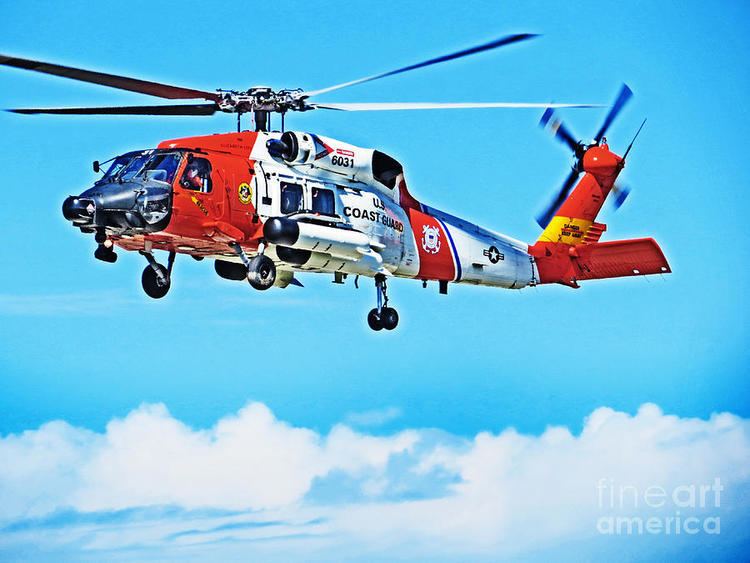
Chosen to replace the HH-3F Pelican, the MH-60T is a member of the Sikorsky S-70 family of helicopters and is based on the United States Navy's SH-60 Seahawk helicopter. Development began in September 1986, first flight was achieved on 8 August 1989, and the first HH-60J entered USCG service in June 1990. Production ended in 1996 after 42 helicopters were produced; three retired SH-60F Seahawks were also remanufactured to MH-60T specifications beginning in 2010. A total of 42 MH-60Ts are in service with the Coast Guard.
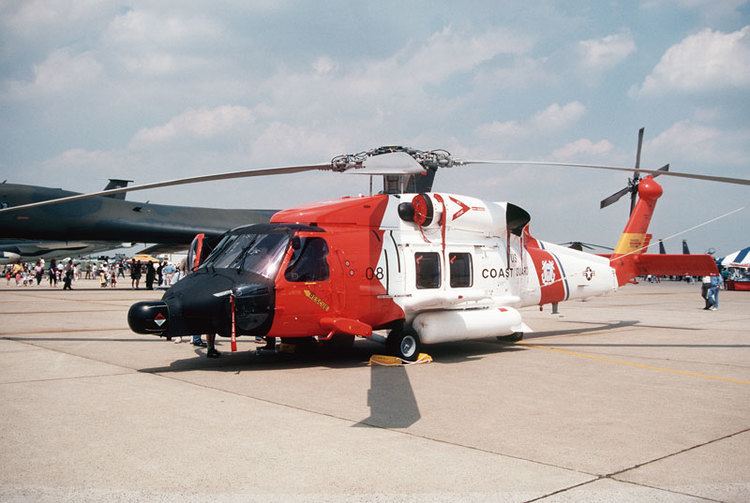
Development
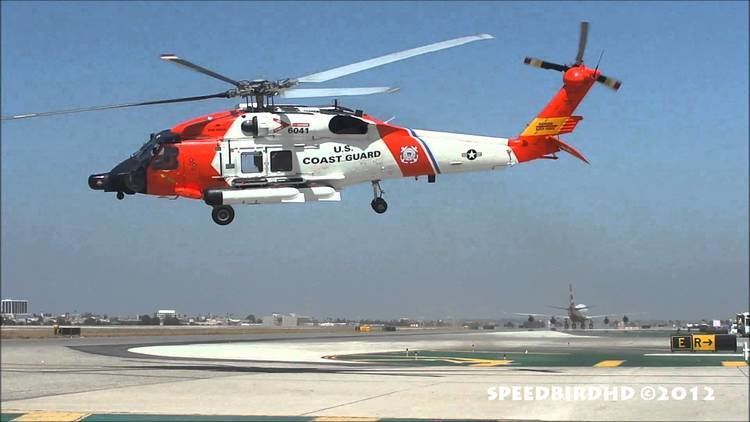
Chosen to replace the HH-3F Pelican, the HH-60J was based on the United States Navy's SH-60 Seahawk and a member of the Sikorsky S-70 helicopter family. Compared to its predecessor, the HH-3F, the HH-60J is lighter, faster, and equipped with more sophisticated electronics and more powerful engines. The HH-60J was developed in conjunction with the U.S. Navy's HH-60H Rescue Hawk.
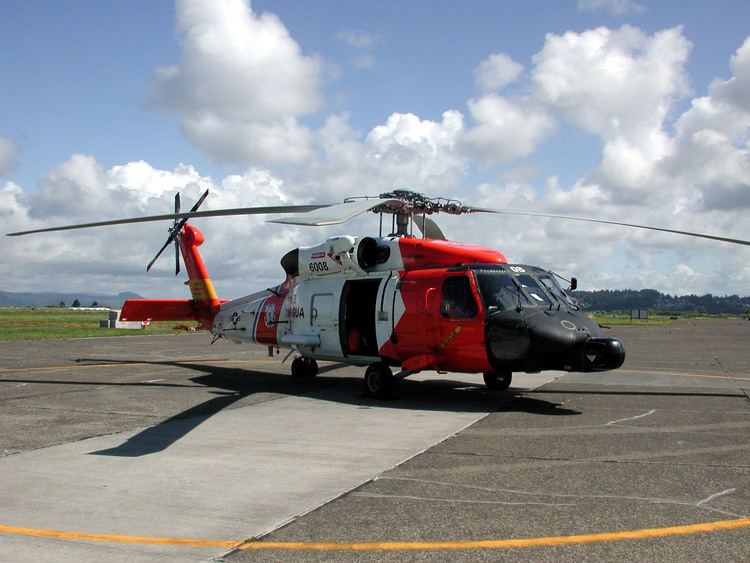
Sikorsky began development in September 1986 and aircraft registration number 6001 achieved first flight on 8 August 1989. The first aircraft was delivered to the USCG for developmental testing in March, 1990 at NAS Patuxent River, Maryland. In March 1991, ATC Mobile, Alabama became the first USCG unit to fly the HH-60J, allowing instructor pilots to prepare for pilot training. Coast Guard Air Station Elizabeth City, North Carolina was the first USCG operational unit to fly the HH-60J. Sikorsky produced 42 HH-60Js with sequential registration numbers from 6001 through 6042. Sikorsky ceased production in 1996 after fulfilling the 42 unit contract. Subsequently, the Coast Guard has converted three ex-Navy SH-60F Seahawks into MH-60T Jayhawks (registration numbers 6043-6045) as attrition replacements.
MH-60T upgrade program
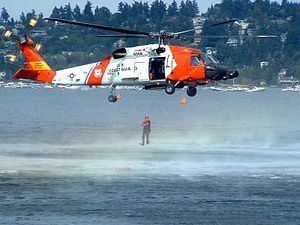
The USCG began converting its 42 HH-60Js to MH-60Ts in January 2007. This avionics and capabilities upgrade is part of the USCG's Integrated Deepwater System Program and will provide a glass cockpit, an enhanced electro-optic/infrared sensor system as well as a radar sensor system and airborne use of force capability. The airborne use of force package includes both weapons for firing warning and disabling shots and armor to protect the aircrew from small arms fire. The MH-60T upgrades were completed in February 2014.
Design
With a fuel capacity of 6,460 lb (2,930 kg), the HH-60J is designed to fly a crew of four up to 300 mi (483 km) offshore, hoist up to six additional people on board while remaining on-scene for up to 45 minutes and return to base while maintaining an adequate fuel reserve. Normal cruising speed of the HH-60J is 135 kn (155 mph) to 140 kn (161 mph) and the aircraft is capable of reaching 180 kn (207 mph) for short durations. The HH60J can fly at 140 kn (161 mph) for six to seven hours.
The HH-60J uses the NAVSTAR Global Positioning System as its primary long range navigational aid, using a Collins RCVR-3A radio to simultaneously receive information from four of the NAVSTAR system's 18 worldwide satellites. The helicopter is normally based on land but can be based on 270 foot medium endurance Coast Guard Cutters (WMEC) or 378 ft high endurance Coast Guard Cutters (WHEC).
The Jayhawk has a radar for search/weather that gives its nose a distinctive look. A forward looking infrared (FLIR) sensor turret can be mounted below its nose. It can carry three 120 US gal (454 L) fuel tanks with two on the port side rack and one on the starboard side rack. The starboard side also carries a 600 lbf (2.67 kN) capacity rescue hoist mounted above the door. The hoist has 200 ft (61.0 m) of cable.
The MH-60T is equipped with a 7.62 mm M240H medium machine gun and a .50 in Barrett M82 semi-automatic rifle for firing warning and disabling shots. These weapons also serve as defensive armament.
Operational history
In 1990, HH-60J Jayhawks began replacing HH-3F Pelican and CH-3E Sea King helicopters in service with the US Coast Guard. HH-60Js perform search and rescue missions, along with other missions such as maritime patrol and drug interdiction. Coast Guard cutters with their HH-60Js and other helicopters performed security and interdiction in the Persian Gulf in 1991 in support of Operation Desert Storm and also in 2003 for Operation Enduring Freedom.
In January 2011, Juneau Mountain Rescue volunteers, working with the Alaska State Troopers and the Coast Guard, rescued an injured hiker on Ripikski Mountain, near Haines. A Coast Guard MH-60 Jayhawk helicopter, dispatched from Sitka, transported the hiker to Bartlett Regional Hospital in Juneau, Alaska.
On 29 October 2012, Jayhawk number 6031 (70-1790) was used during the offshore rescue of the crew of HMS Bounty during Hurricane Sandy.
Variants
Operators
Accidents
As of July 2010, three Jayhawks have been involved in crashes, including two fatal crashes.
Specifications (HH-60J)
Most data is for HH-60J with data for MH-60T noted below.Data from USCG HH-60J information, Sikorsky S-70B Seahawk information, Globalsecurity.org HH-60J specifications
General characteristics
Performance
Armament
